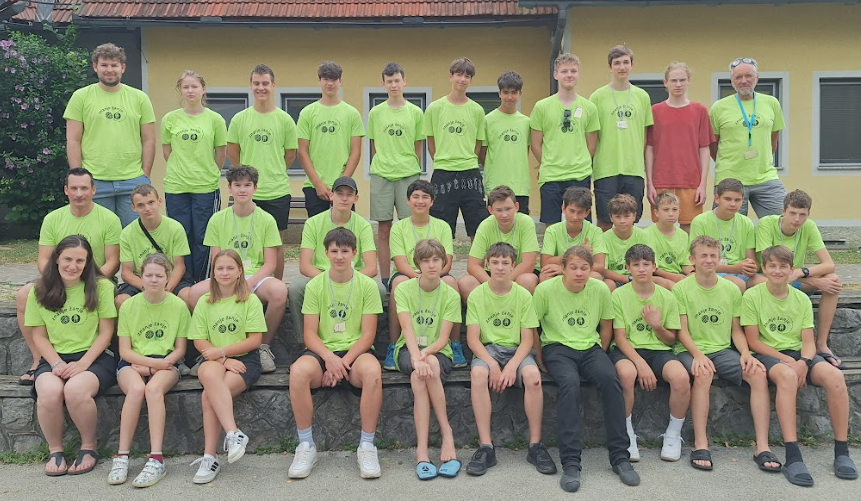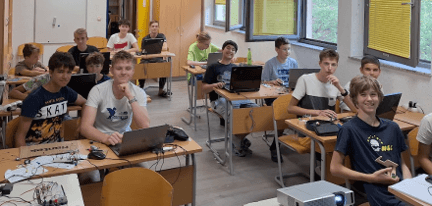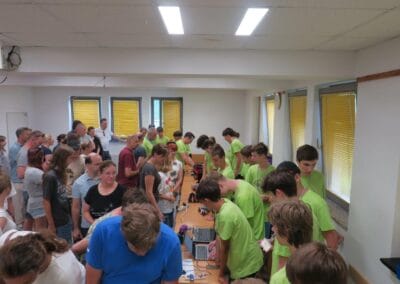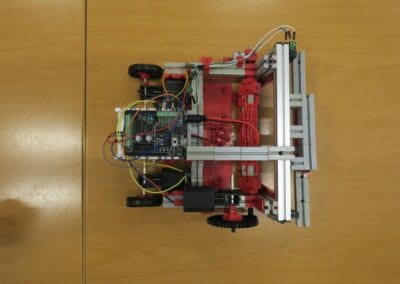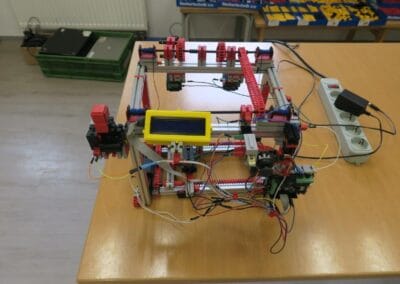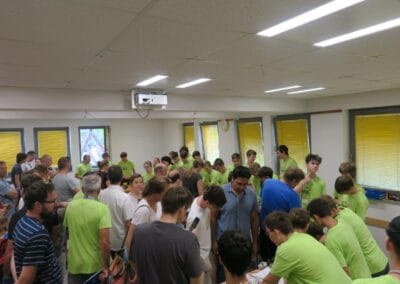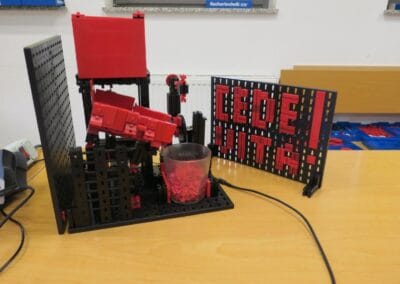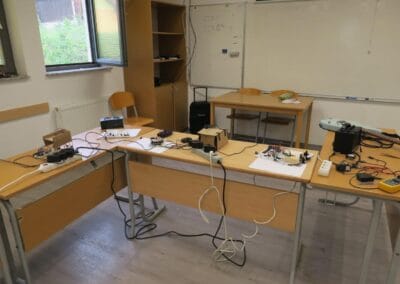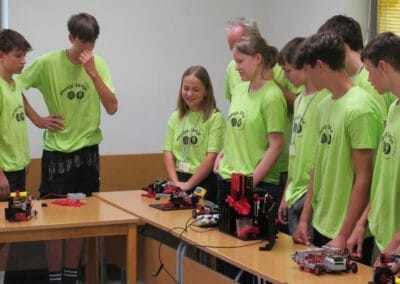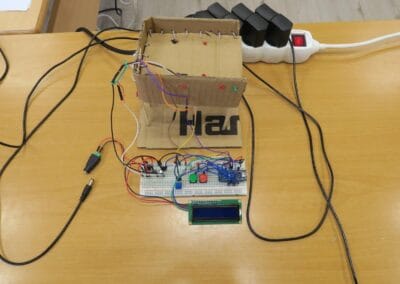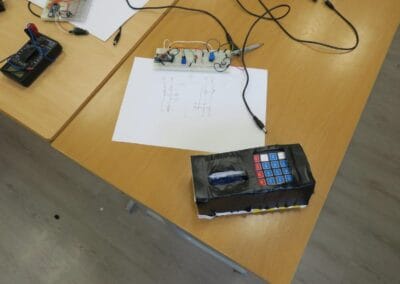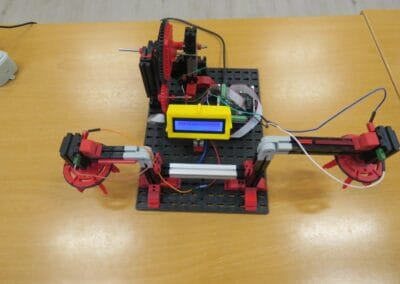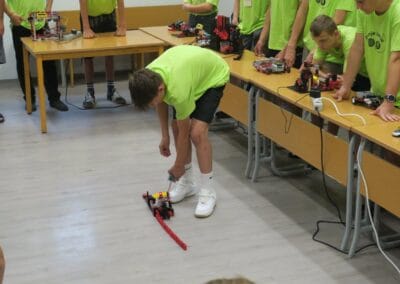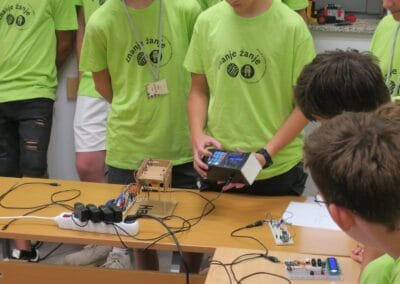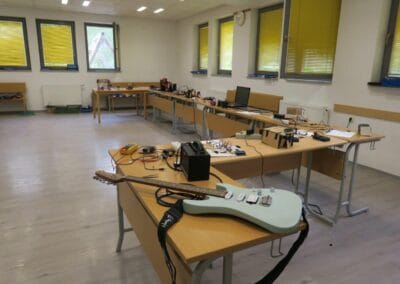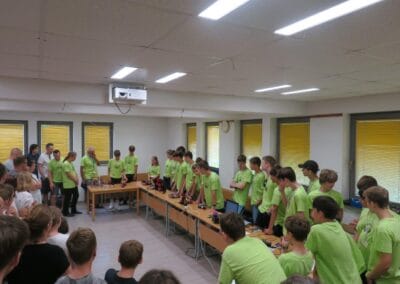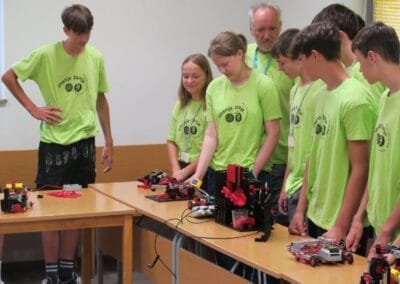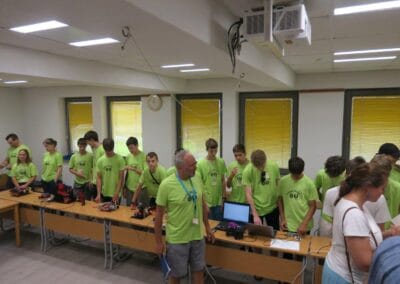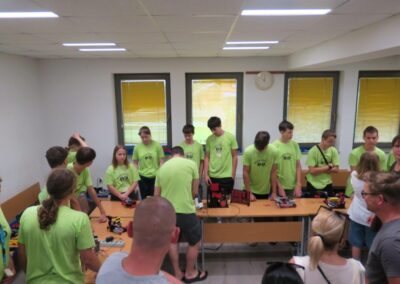In the last days of June, when summer had already shown its true warmth, young enthusiasts of electronics and robotics gathered at CŠOD Radenci, full of anticipation, creative energy, and curiosity. From June 30 to July 5, 2025, the Makeathon took place as part of the Summer School of Robotics and Electronics, bringing 28 participants aged between 12 and 18 to the small town by the Kolpa River. Fifteen chose electronics, while thirteen opted for robotics. Both groups faced new experiences, technical challenges, and the chance to turn their ideas into something real.
The days in Radenci followed a thoughtful rhythm. Mornings began with walks and exercises to start the day calmly, helping participants to focus their thoughts and awaken their bodies. Then, the young learners stepped into the world of diodes, motors, electronics, robotics, sensors, logical commands and more.
Robotics Makeathon
Participants who chose robotics spent the first part of the week exploring the basics of mechanical assembly and programming. Using FischerTechnik components, they built moving structures, connected them to Arduino UNO boards, and learned how commands could become motion. How a simple command could light up a lamp, spin a motor, how a sensor could detect an obstacle, and how a robot could ‘decide’ what to do next. These were not just technical exercises, but stories in the making—each assembled system was a step toward a project to be developed in the second half of the week. Each participant had the chance to design something entirely their own. No instructions, no pre-prepared solutions—just an idea, the mentor’s support, and a lot of personal determination.
Electronics Workshop
In the room next door, other sparks of creativity were flying. Participants deepened their understanding of basic components such as resistors, capacitors, transistors, and switches, but quickly moved into the world of programmable logic. They learned how to control analog input signals, control digital outputs, connect sensors, and drive motors.
Each had the opportunity to test their knowledge in a real-world context. With prototype boards, wires, measuring instruments, and persistence, they built functioning circuits. This was where true creation began: how to connect all the elements, how to measure voltages, how to program responses, and most importantly—how to find and fix errors. And even though connections sometimes failed or codes threw errors, the young participants were ready for every challenge.
Participants’ Projects
In the second half of the week, the knowledge gained in the first days transformed into creativity. The young participants developed concrete projects from their ideas, demonstrating not only technical understanding but also ingenuity, teamwork, and perseverance. Each project was unique, and each student walked away with an important experience. In the end, they proudly presented their projects to parents and mentors. Here are some of the projects:
– Jernej and Bor: designed a countdown timer and stopwatch that could measure time in hours, minutes, and seconds, with options to stop, resume, or reset. The system included a 4×4 keypad, LCD display, buzzer, and Arduino Nano. At the end of the countdown, a sound signal was triggered, which could be silenced with a button. The device also functioned as a stopwatch. Through this, they learned much about input-output operations and managing the logic of a multifunctional system.
– Gašper and Matevž: built a security system that detected open doors and allowed the user to enter a security code. If the code was not entered in time, an alarm sounded and the screen displayed: ‘Police are on the way.’ The system stopped only when a button was pressed. The boys explored potential improvements with biometric control and delved into managing sensors, LCD displays, and security sequence logic.
– Erik and Matic: created an automatic kitchen hood with three operating modes: manual, automatic, and off. In automatic mode, the fan turned on when humidity exceeded 80%. Users were informed of the system status with LEDs, fan speed was adjusted with a potentiometer, and temperature and humidity were displayed on the screen. With this project, they learned about measuring environmental parameters, controlling motor speed, and managing multi-level system operations.
– The Sweeper Robot: developed by two participants, was a simple yet highly practical autonomous machine. Its purpose was to collect plastic blocks from the floor. The robot moved with two motors and had a rotating brush underneath that swept the blocks into a container. Equipped with a front switch serving as an obstacle sensor, the robot would stop, turn, and continue cleaning in another direction when it hit a wall.
– Domino Bot: another fascinating project, impressed with its playfulness and mechanics. The user could choose between two options: having the robot both set up and knock down the dominoes, or knocking them down manually. Using a servo motor, the robot placed dominoes from a special “magazine,” while the LCD screen displayed the number of dominoes already placed. The system used three motors, a switch, and a button. In addition to its technical complexity, the project stood out for its practical and aesthetic design.


